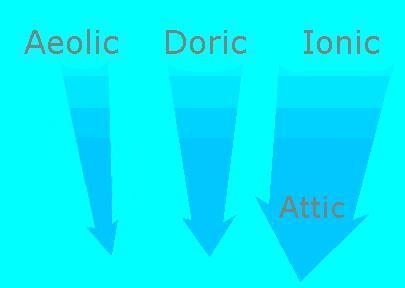Ancient greek lesson 5 how to pronounce ancient greek diphthongs.
Attic greek pronunciation improper dipthongs.
This iota has no effect on the pronunciation but is essential for translation so pay close attention to it.
αι as in aisle.
The diphthongs are pronounced.
In this post there are examples on the pronunciation of the diphthongs ει οι and αι.
In some other words this vowel resulted from the process of contraction as in the genitive ending ους from εος or compensatory lengthening as in the.
Ancient greek phonology is the reconstructed phonology or pronunciation of ancient greek this article mostly deals with the pronunciation of the standard attic dialect of the fifth century bc used by plato and other classical greek writers and touches on other dialects spoken at the same time or earlier.
The last three formed by writing ι under ᾱ η ω are called improper diphthongs.
Letters upper and lower case greek letters are shown if you have a graphical browser followed by beta code transcription and the name of the letter diphthongs are pronounced by slurring together the individual vowel sounds except as noted below.
α ε η ι ο υ and ω.
This iota has no effect on the pronunciation but is essential for translation so pay close attention to it.
An iota subscript is a small iota written under the vowels α η or wω ᾳ ῃ ῳ and normally is the last letter in a word.
Greek has seven vowels.
Their second vowel is called iota subscript.
The information presented here is essentially the same as the core information in unit 1 of introduction to attic greek but broken into smaller chunks and provided with audio examples the aim is to discuss the pronunciation of attic greek in the 5th and 4th centuries b c e.
An improper diphthong is made up of a vowel and an iota subscript.
There are proper and improper diphthongs.
A diphthong is a combination of two vowels that make one syllable.
Vowels ε and o are always short η and ω are always long and α ι υ may be either short or long.
Pronunciation was shifting during this period and shifted further over the following.
An improper diphthong is made up of a vowel and an iota subscript.
An iota subscript is a small iota written under the vowels α η or ω ᾳ ῃ ῳ and normally is the last letter in a word.
In classical attic this was a single sound monophthong written with two letters digraph in some words this long vowel derived from a true diphthong always spelled ου in the old attic alphabet genuine diphthong.
Comments are turned off.
Show more show less.
The dipthongs are αι αυ ει ευ οι ου ηυ υι ᾳ ῃ ῳ.

